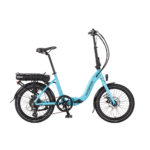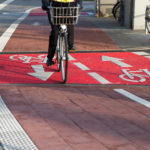D
Deleted member 4366
Guest
I just thought I might share this idea with you. I bought a power meter and was wondering how to mount it until I looked at my iphone mount which was nearly the same size. I warmed up the clips with a heat gun and was able to bend them so that the meter clipped in perfectly. The mount cost £2.37 inc. postage from Ebay:
Bike Bicycle Handlebar Mount Holder For iPhone 3G 3GS on eBay (end time 09-Oct-10 18:46:54 BST)
Installation picture: SANY0025.jpg picture by d8veh - Photobucket
I have yet to finish insulating the wires. I have tried it out and was surprised to see that my Bafang 250watt motor gives over 600 watts up steep hills. One hill was a mile long and continuously steep. The motor didn't drop below 500 watts all the way up. It used about 2AH just for this one hill.
Bike Bicycle Handlebar Mount Holder For iPhone 3G 3GS on eBay (end time 09-Oct-10 18:46:54 BST)
Installation picture: SANY0025.jpg picture by d8veh - Photobucket
I have yet to finish insulating the wires. I have tried it out and was surprised to see that my Bafang 250watt motor gives over 600 watts up steep hills. One hill was a mile long and continuously steep. The motor didn't drop below 500 watts all the way up. It used about 2AH just for this one hill.






